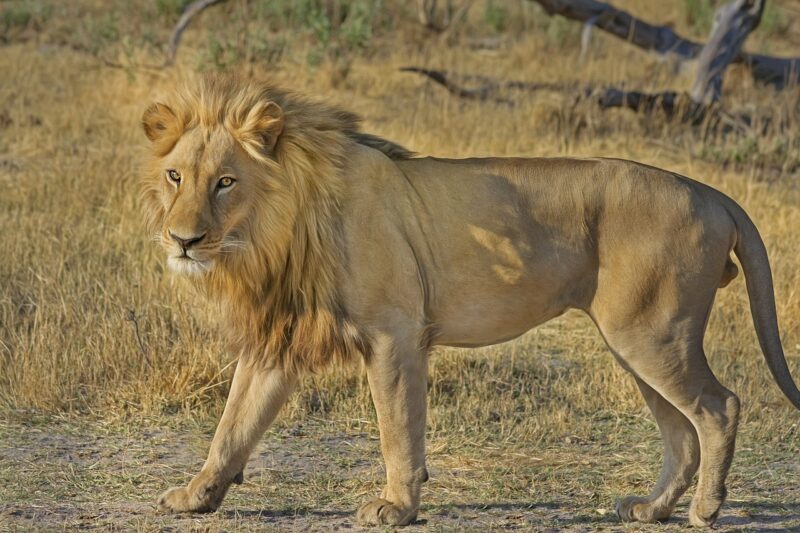Why Certain Animals Became Symbols of National Identity and Cultural Pride Across the World
November 17, 2024

Throughout history, animals have played a significant role in shaping human identity and cultural pride. From the majestic bald eagle of the United States to the resilient kangaroo of Australia, these creatures often reflect the values, history, and spirit of the nations they represent. This article delves into the various reasons why certain animals have become symbols of national identity and explores the cultural significance behind their representation.
1. The Historical Context of Animal Symbolism
Animals have long been used in various cultures to symbolize different attributes and ideals. Anthropology and archaeology reveal that early human societies often looked to the animal kingdom to find traits they aspired to embody. The cow, revered in Hindu culture, symbolizes nourishment and motherhood. Similarly, the lion, often dubbed the “King of the Jungle,” represents strength and courage in various cultures. These animal symbols became embedded in mythologies and folklore, establishing deep-rooted connections between nations and their corresponding animals.
One of the earliest examples of animals used as symbols is the use of the wolf in ancient Roman culture to represent strength and loyalty. According to legend, the she-wolf raised Romulus and Remus, the founders of Rome, embedding the wolf in the city’s founding myth. These stories link national identity to specific animals, providing historical context to their modern significance.
2. National Animals: Representations of Values and Traits
National symbols are often carefully chosen to reflect the cultural values and ideals of a nation. The animal selected as a national symbol usually embodies traits that a country wishes to promote. For instance, the eagle represents freedom and strength in the United States, while the Chinese dragon symbolizes power, strength, and good fortune.
– Bald Eagle (USA): As the national bird of the United States, the bald eagle stands for independence and resilience. Its status as a top predator makes it a fitting symbol for the nation’s ideals of strength and freedom.
– Tiger (India): The tiger is the national animal of India, representing not only strength and agility but also the rich biodiversity of the country. The tiger’s status as an endangered species has also become a symbol of the need for conservation efforts, aligning with modern values of environmental awareness.
Each of these symbols carries with it an inherent cultural narrative that allows citizens to connect with something greater than themselves, fostering a shared identity.
3. Animals in Heraldry and National Emblems
The use of animals in heraldry dates back to medieval times when symbols were used to represent families and kingdoms. Today, many countries retain these symbols in their national emblems and flags. Heraldic animals are often depicted with stylized designs and can reach mythological proportions, adding layers of meaning to cultural identity.
– Lion (England): The lion, a symbol of bravery and valor, features prominently in the royal coat of arms of England. Its powerful imagery has made it synonymous with the nation’s strength and courage in times of conflict.
– Kangaroo (Australia): Featured on the Australian coat of arms, the kangaroo symbolizes progress and the unique characteristics of the Australian continent. The kangaroo can only move forward, which resonates with the notion of moving forward as a nation.
The permanence of these emblems means that they remain in the everyday consciousness of citizens and contribute to a sense of national pride.
4. Cultural Festivals and Animal Symbolism
Animals often play prominent roles in traditional festivals and ceremonies, reinforcing their status as national symbols by associating them with celebrations of local identity. Countries around the world celebrate different animals through various events, deepening the connections between these creatures and their cultures.
– Oni Matsuri (Japan): Celebrated nationwide, this festival features the traditional lion dance as a means of warding off evil spirits. The lion is a symbol of power, strength, and protection, making its performance a critical element of cultural celebrations.
– The Running of the Bulls (Spain): A globally recognized event, this festival not only highlights the bull as a symbol of bravery but also raises questions about animal rights and heritage. The bull symbolizes power and pride in Spanish culture.
Through these festivals, people engage with their cultural heritage in a tangible way, allowing for the dynamic interplay between tradition and contemporary practice.
5. Global Perspectives: Variations and Commonalities
While countries have unique animal symbols, there are also significant patterns and similarities in what animals represent around the world. For instance, many countries choose national symbols that represent strength, freedom, or resilience. This can lead to common international symbols such as:
– <strong;Eagle: Appears</strong; in various iterations, including the double-headed eagle in the coat of arms of Russia. Requesting the eagle's symbolism connects diverse cultures to ideals of freedom, power, and independence.
– <strong;Bear: Represents strength and courage, found in North American and European cultures alike. The bear is not only a national symbol for the state of California but also holds historical significance in many European heraldries.
Such commonalities highlight how animal symbolism transcends geographical boundaries, serving as an avenue for intercultural dialogue and understanding.
6. The Role of Animals in Modern Cultural Narratives
As societies evolve, the relationship between people and animals transforms as well. In modern narratives, animals continue to serve as symbols, although their representation may shift to include themes like conservation and environmental responsibility. National animals not only serve as sources of pride but also as part of critical discussions around biodiversity preservation.
Countries are increasingly selecting symbols that highlight their commitment to conservation, intertwining national identity with ecological awareness. For instance, the adoption of the snow leopard as a national symbol in Mongolia underscores both the nation’s pride in its unique wildlife and a call for environmental stewardship.
Conclusion: The Enduring Legacy of Animal Symbols
The symbols of animals embedded in cultural and national identities are as diverse as the creatures themselves. They serve as embodiments of collective narratives, pride, and values that define nations around the world. Across various forms—myth, heraldry, folklore, and modern conservation efforts—animals represent an ongoing dialogue between culture, identity, and the natural world.
Understanding the significance of these symbols invites deeper introspection on how we perceive our connection to nature, culture, and identity as global citizens. As we celebrate our national beasts, we are reminded of the shared values that give us a sense of belonging in a complex world.








